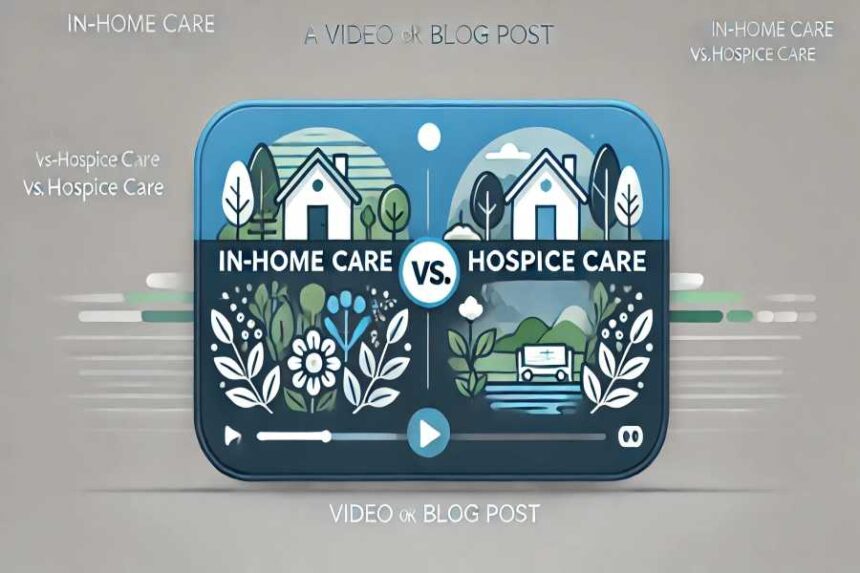When faced with the decision of how best to care for a loved one with a serious illness, the choice between in-home care and hospice care at a facility can be daunting. Both options offer compassionate support but differ significantly in their approach and benefits. This article delves into the key differences, advantages, and potential drawbacks of each option.
- Understanding In-Home Care
- Understanding Hospice Care at a Facility
- Personalized Care and Attention
- Professional Training and Expertise
- Consistency and Reliability
- Emotional and Social Support
- Cost Considerations
- Independence and Autonomy
- Flexibility of Care
- The Role of Technology
- Quality of Life Considerations
- Conclusion
Understanding In-Home Care
In-home care involves professional caregivers who come to the home to provide comprehensive and consistent support. These caregivers are trained to handle various needs, from personal hygiene to medication management. In-home care is usually provided through agencies that ensure caregivers are qualified and reliable. Professional caregivers follow a schedule and care plan tailored to the individual’s specific needs. This professional approach ensures the care recipient receives regular and reliable assistance in the comfort of their own home.
Understanding Hospice Care at a Facility
Hospice care at a facility involves providing comprehensive end-of-life care in a specialized hospice setting. These facilities are staffed with healthcare professionals who are trained in palliative care, focusing on comfort and quality of life for patients with terminal illnesses. Hospice care facilities provide round-the-clock medical attention, emotional support, and pain management. The facilities often have private rooms, family visitation areas, and therapeutic services. The goal is to ensure patients spend their final days in comfort and peace.
Personalized Care and Attention
In-home care offers personalized attention, ensuring that the caregiver is solely focused on the individual’s needs. This one-on-one interaction can significantly enhance the quality of care, fostering a deeper understanding and stronger relationship between the caregiver and the recipient. Hospice care at a facility, while also attentive, involves multiple staff members providing care, which can lead to a more team-based approach.
- In-home caregivers can tailor their support to the specific preferences and routines of the care recipient, creating a familiar and comforting environment.
- Hospice facilities, on the other hand, offer a comprehensive care plan involving doctors, nurses, and therapists who work together to manage symptoms.
Professional Training and Expertise
One of the primary advantages of both in-home care and hospice care at a facility is the professional training and expertise that caregivers bring. In-home caregivers have the knowledge and skills to handle various health conditions and emergencies. Similarly, hospice facility staff are trained in palliative care, focusing on pain management and emotional support.
Hospice care facilities typically ensure their staff undergo rigorous training and continuous education to stay updated with the latest palliative care practices. This professional development ensures that caregivers are well-prepared to manage symptoms, administer medications, and provide emotional support effectively. In-home care agencies also provide ongoing training to ensure their caregivers can meet the diverse needs of their clients.
Consistency and Reliability
In-home care offers high consistency and reliability, as caregivers follow a structured schedule and care plan. This consistency ensures that the individual’s needs are met regularly and predictably. Hospice care at a facility provides 24/7 care, ensuring that medical and emotional support is always available.
- The structured nature of in-home care means that care recipients can rely on regular routines and schedules, which can be comforting and stabilizing, especially for those with cognitive impairments like dementia.
- Hospice facilities provide a constant presence of medical professionals, ensuring immediate attention to changes in the patient’s condition.
Emotional and Social Support
In-home and hospice care at a facility provide emotional and social support, but the approach differs. In-home caregivers often engage the individual in activities that reduce feelings of isolation and loneliness. Hospice facilities offer a team-based emotional support approach involving counselors, social workers, and spiritual advisors.
- In-home caregivers often play a vital role in maintaining their clients’ social and emotional well-being. They can engage in meaningful conversations, participate in favorite activities, and provide companionship, essential for mental health.
- Hospice facilities provide a comprehensive support system for patients and their families, offering counseling and bereavement services.
Cost Considerations
Cost is a significant factor when deciding between in-home and hospice care at a facility. In-home care services can be expensive, especially if round-the-clock care is required. Hospice care at a facility is often covered by Medicare, Medicaid, and private insurance, potentially reducing out-of-pocket expenses. Consider financial and emotional costs when deciding.
Independence and Autonomy
In-home care strives to maintain the individual’s independence within the professional support framework, which can sometimes feel more intrusive. Hospice care at a facility aims to create a comfortable and dignified environment but may limit some aspects of independence.
- In-home caregivers are trained to support independence by assisting with tasks only when necessary and encouraging the individual to do as much as possible on their own.
- Hospice facilities focus on comfort and quality of life, which might involve more assistance to ensure the patient’s needs are met efficiently and compassionately.
Flexibility of Care
In-home care offers structured and predictable support, which can benefit individuals with specific medical needs or those who thrive on routine. Hospice care at a facility provides a consistent care plan, ensuring that all aspects of the patient’s well-being are addressed.
- The flexibility of in-home care can be advantageous in adapting to sudden changes in the individual’s condition or schedule.
- Hospice facilities, with their multidisciplinary teams, can quickly respond to changes in the patient’s health status, providing immediate and specialized care.
Both settings offer unique advantages in terms of flexibility and responsiveness.
The Role of Technology
Technology is crucial in enhancing both in-home and hospice care at a facility. In-home care agencies often use advanced systems for monitoring health, medication reminders, and emergency alerts. Hospice facilities utilize technology to manage symptoms, communicate with family members, and provide virtual consultations with specialists.
Quality of Life Considerations
In-home care can offer a higher quality of life through personalized and consistent support. Still, hospice care facilities provide a specialized environment to enhance comfort and dignity in the final stages of life. Quality of life encompasses physical health, emotional well-being, social interactions, and happiness.
- The structured support of in-home care can enhance physical health and safety, while the familiar and personal touch can provide emotional comfort.
- Hospice facilities focus on providing a peaceful and supportive environment, ensuring that patients and their families experience the highest possible quality of life.
Conclusion
Choosing between in-home care and hospice care at a facility depends on various factors, including the individual’s health needs, personal preferences, financial considerations, and the availability of family support. In-home companion care provides professional, reliable, and personalized support, making it an excellent choice for those needing comprehensive care. Hospice care at a facility, with its specialized environment and round-the-clock support, offers unparalleled comfort and dignity at the end of life. Ultimately, the best choice is the one that aligns with the individual’s unique needs and enhances their overall well-being.




